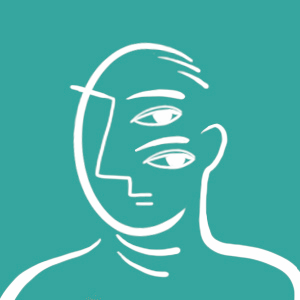From humble beginnings sewing foreign labels onto their sweaters, Erdos feels the weight of responsibility as one of China’s oldest fashion brands
“Our goats provide the very best cashmere in the world,” claims Li Jing, CEO of 1436, the luxury fashion arm of one of China’s best-known conglomerates, Erdos.
It’s no empty boast: The company pays three times the price of their competitors for genuine arbas goat hair, which must meet exact standards—less than 14.5 micros in fineness and at least 36 millimeters in length, hence “1436.”
The cost of these conditions is passed on to luxury buyers, Erdos’s new target market, and the holy grail sought by every Chinese textile company seeking to establish their own brands. But while Erdos is held up as an exemplar of the state’s “Made in China” industrial upgrade policy, it has the typical frustrations of a Chinese company balancing standards with cost—and a conflict between fierce capitalism and ecology on the Inner Mongolian plains.
Founded in 1980 in Ordos, a sparsely populated city in Inner Mongolia, Erdos originally capitalized on its access to the goats that produced some 70 percent of the world’s raw cashmere supply. At the time, China was so poor that there was no machinery to process cashmere. “We had a special agreement with a Japanese company. They provided us with the machines and we exported our cashmere exclusively to them as payment for the first couple of years,” explains Dai Tana, executive deputy general manager at Erdos.
As early as 1988, though, Chairman Wang Linxiang was already conceiving a cashmere brand for China’s own affluent consumers, believing there were limits to the overseas business. This proved to be a tough sell: “It was necessary to educate consumers about what cashmere was, and why it was so much more expensive than wool,” says Dai. Since most department stores were unwilling to buy cashmere, Wang left Erdos sweaters on consignment.
In the meantime, the export market remained a cornerstone of the company, which supplied cashmere to European fashion houses, such as Hermès, Burberry, and Loro Piana, as well as sweaters for American malls. “If you see a Lands’ End sweater that says ‘Made in China,’ it’s ours,” an Erdos manager bragged to The New York Times in 1996. For that year’s Christmas rush, Erdos had exported over 400,000 cashmere sweaters under Lands’ End, Macy’s, and J. Crew labels at a fraction of the cost of competitors in Europe.

With little competition, Erdos was quickly able to dominate Chinese market, but would struggle to maintain relevancy over the coming years. Once high-end foreign products flooded the market, Erdos was pigeonholed as “Grandpa’s sweater” among younger consumers. To keep up, Erdos poached designers from international competitors, such as Hugo Boss and Giorgio Armani.
A more pressing problem was the effect of rampant capitalism on Erdos’s backyard: Inner Mongolia was becoming increasingly deforested and barren, eroding the natural grazing habitat of the arbas goat. Since wool is sold by weight, opportunistic herdsmen began to cross-breed their arbas with other goat species with thicker and heavier hair, threatening the arbas with extinction.
Faced with this superfine cashmere crisis, Erdos took drastic measures, establishing an experimental herd of 8,500 arbas goats in the Otog Banner in Ordos, and creating the 1436 brand in 2006 to support the project. “Most of our customers have seen the world many times over,” Li claims. “They can clearly feel the difference in the quality of our cashmere compared to others.”
That said, 1436 products are priced at one-half or two-thirds the price of foreign brands, such as Loro Piana, though many of these companies still source their raw cashmere through Erdos. “Today, we have three main sources of revenue for our company,” explains Dai: Erdos and 1436 for the domestic market; raw fiber exports; and supplying “finished cashmere products to foreign brands through long-standing partnerships.”
Instead of providing their own model garments for copy, some representatives of these foreign brands visit the Erdos showroom in Beijing to choose pre-made designs, which are later sewn with their label. This practice is known in the industry as ODM (original design manufacturer), and, along with licensing agreements, is the key to how socialite Ivanka Trump or pop singer Jessica Simpson can create apparel brands without any background in fashion design.
“Many [Chinese] factories lack an understanding of sales and marketing,” says Rachel Zheng, content curator for luxury news site Jing Daily. “So, they must rely on foreign partnerships with companies like Calvin Klein or UGG.”
This means, though, that many “made in China” products could have been designed in China as well, even if they carry a foreign label. ODMs have also become “a timely topic—right now, [President] Xi Jinping is promoting the development and protection of intellectual property, as well as original innovations,” says Zheng. “This means that many textile factories are actively transitioning to ODMs with their own design teams.”
This is easier said than done, however. “Chinese people believe in the power of brands,” says Zheng. “This is especially the case for high-end consumers…ODMs are popular among only value-conscious shoppers, especially in lower-tier cities.” Some textile companies opt to acquire foreign brands: the Shandong Ruyi Textile Company purchased Bally for 700 million USD last year.
Erdos, Dai stipulates, ensures that none of its foreign-labeled cashmere products are sold in the Chinese market, and recognizes the challenges of developing a sustainable brand. “So many of China’s earliest fashion brands have already disappeared from the market,” she notes. “We are constantly having to push ourselves to remain relevant.”
For CEO Li, though, the mission is simpler. “In the past, ‘Made in China’ was often associated with things that are made cheaply or plagiarized. [Erdos] wants to show that ‘Made in China’ is something to take pride in.” Or in other words: “Save a goat species; revive Chinese confidence in our national brands.”
Label Economics is a story from our issue, “China Chic.” To read the entire issue, become a subscriber and receive the full magazine. Alternatively, you can purchase the digital version from the App Store.














